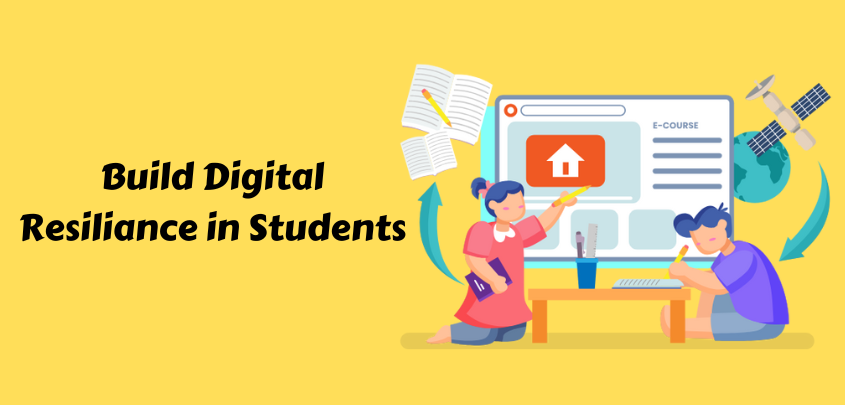
19, Aug, 2024
Top 5 Ways to Build Digital Resilience in Students
A digitally resilient student can recover from setbacks, make informed decisions, and maintain a healthy balance in their online and offline lives. Building digital resilience is essential for thriving in today’s interconnected world.
- Teach Critical Thinking
Encourage students to question the content they encounter online. By fostering critical thinking, students can better assess the credibility of information, recognize potential threats, and make informed decisions in the digital world. - Teach & Practice Digital Hygiene & Etiquette
Guide students in developing appropriate online behaviours, such as managing screen time, avoiding digital overload, and practicing self-care. Healthy habits contribute to overall well-being and help students maintain control over their digital lives. - Encourage Open Communication
Create a safe space where students feel comfortable discussing their online experiences. Regularly talking about challenges and successes online helps students build confidence in handling digital issues and reduces the stigma around seeking help. - Educate on Cyberbullying Prevention
Equip students with strategies to prevent and respond to cyberbullying. Understanding how to deal with online harassment empowers them to protect themselves and others, fostering resilience in the face of adversity. - Build Emotional Intelligence
Help students develop emotional intelligence by teaching them to understand and manage their emotions, especially in online interactions. Emotional awareness strengthens their ability to navigate the social complexities of the digital world with resilience and empathy.
By implementing these strategies, educators can help students build digital resilience, enabling them to navigate the digital landscape with confidence, balance, and emotional strength.
